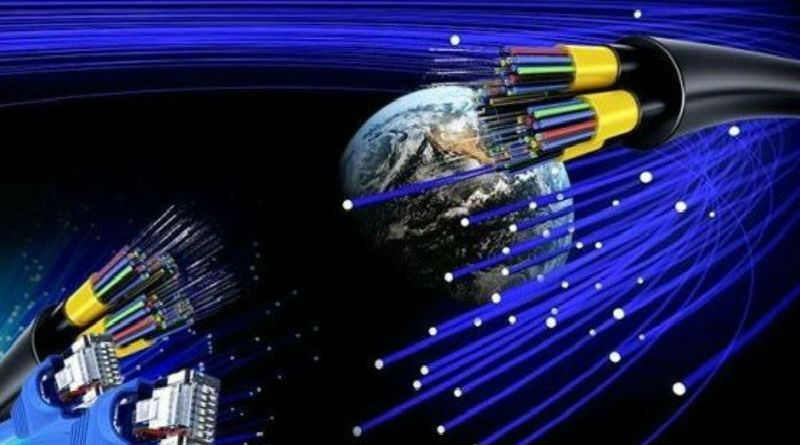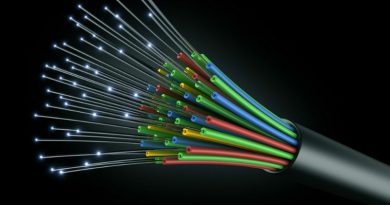Top 10 Enormous Business Benefits of Fiber Internet Connectivity
You could find yourself lost in the world of networking when it comes to home or office internet. There are so many options, and with all the various choices available it is easy to easily get confused. It seems as if internet businesses are popping up everywhere, which may leave residents questioning which choice is best for them and the communication needs. Fiber optic internet installation provides many benefits for IT professionals and company landlords.
The newness of this technology, you might wonder if the advantages outweigh the costs or inconveniences. Although fiber-optic Internet access is a much newer technology than copper-cable broadband Internet, many companies have seen substantially higher returns on their fiber investment.
Internet access over fiber optic networks has become the gold standard for enterprise fast, high-quality data transmission. This technology’s relatively new nature may leave some hesitant at investing in it for their business.
Fiber depends on light for the transmission of data instead of energy, which allows much quicker Internet connections capable of handling higher bandwidth.
Although most business decision-makers are aware of the fiber’s speed benefits, other benefits are less widely known. Newer technology investment can be risky, especially for organizations that rely heavily on their Internet connectivity for consumer interactions, efficiency, and collaboration.
Within this post, you’ll learn a bit more about the various ways that fiber-optic Internet compares to standard copper cable, including the potential for bandwidth, speed, reliability, among other factors.
Below we will discuss the benefits of choosing fiber optic internet over other options such as cable internet.
Speed
Fiber-optic Internet is several times faster than even high-speed copper Internet connections, with options ranging from 5 Mbps to 100 Gbps available. Your company shouldn’t find the Internet slowing down during times of high demand for Internet connectivity.
Evidence shows that slow internet connections cost workers “one week of productivity per year.” Although the time the teams spend waiting on the slow internet can seem insignificant, it adds up considerably over time. Their access to the Internet will never hinder efficiency. It should be an instrument that supports the desire of your employees to work productively.
Investing in the fiber optic internet will increase the bandwidth capacity considerably. The complexity of copper wire infrastructure and TDM technology is tight. As it was initially only configured to transmit voice calls, bandwidth demand wasn’t high. T-1, for example, will hold only 1.5 Mbps of the throughput. And several forms of links over copper are restricted by distance because of how electrical signaling works.
Usually, the Ethernet over Copper (EoC) service is not available if the circuit is longer than 15,000 feet. For organizations considering transferring their voice-over – IP (VoIP) communications, getting the bandwidth transmitted over fiber can be an invaluable asset
Cloud Access
The cloud is an important business resource for software, hosting, and more, ranging from customer relationship management (CRM) tools to data storage. Ninety-six percent of companies use the cloud in some way now. Fiber Internet speed and bandwidth capabilities mean quicker access to your cloud-saved data and applications.
Your company will benefit from fewer delays in accessing cloud-hosted information through the software-as-a-service (SaaS) tools and other channels, ensuring that members of the sales and customer support will no longer face delays in connecting with prospects or clients. The fiber-optic Internet is becoming vital as companies shift more and more infrastructure into the cloud.
Reliability
Fiber Internet connectivity provides significant reliability advantages over copper Internet connectivity, as fiber is much stronger than copper. Fiber-optic Internet is not susceptible to weather conditions that can harm or stop the transmission of data through the copper cable. Moreover, fiber is resistant to human or electrical interference if fibers are not cut physically.
Unreliable connections to the Internet may have real costs for businesses. Some amount of unplanned downtime will bring a full stoppage in business communication and productivity. If your company requires an Internet connection to make phone calls or access applications, there is a need for reliability.
There are a variety of factors that may cause outages when a company depends on the internet based on copper cables. Fluctuations in temperature, extreme weather conditions, and humidity can all cause a loss of connectivity. Old or rusty copper wire, as it carries an electrical current, may also pose a fire hazard. Additional copper-related reliability issues include the potential for interference from electronic or radio signals. Telephone company workers access copper wires in the house, so they may often make mistakes so fiddle with the wrong wires.
Copper wires can often go back to the Central Office telephone company where disconnections can occur. Usually, Fiber is independent of the telephone company, its facilities, and termination points.
Signal Strength
The signal is reduced when using DSL or Ethernet on copper for conventional broadband internet, as the user travels away from the switch. The fiber-optic Internet’s signal power doesn’t diminish as soon as it’s over.
Companies located in relatively large areas will benefit from improved signal intensity around the facility. It is especially relevant for workers in the workplace who are at a significant distance from the telecommunication room and who are adversely affected by the gap of broadband internet.
Bandwidth
It’s fairly straightforward to “strike the limit” on your cable internet bandwidth for businesses with a strong need for data transmission. The needs of corporate information technology can differ significantly, the advantages of fiber-optic internet make it an increasingly popular option for data transmission by businesses. Companies who want to invest in fiber usually consider the overall cost of ownership, capacity for bandwidth, and increases in speed to be noticeable. Internet is not completely limitless for enterprise, the quality of bandwidth is considerably higher, and capacity does not decrease when high demands are imposed on the network. The following user activities can put particularly high demands on the bandwidth of companies:
- IP trunking
- Web Conferencing
- Streaming high definition video (example… training video)
- File sharing
- Cloud Applications
Signs of low availability of bandwidth may increase Although the need for corporate information technology can differ significantly, the advantages of fiber-optic internet make it an increasingly popular option for data transmission by businesses. Companies who want to invest in fiber usually consider the overall cost of ownership, capacity for bandwidth, and increases in speed to be noticeable. lude slow velocities, delays, and pixelated video quality.
If your current Internet connection is not adequate to meet the valid demands of your company for telephone service bandwidth through SIP trunking, video conferencing, or accessing cloud applications, you may benefit greatly from an upgrade to fiber-optic Internet connectivity.
Symmetric Speed
“Symmetric Speed” is a term used over an Internet connection to refer to equal upload and download times. Your employees will benefit from the same upload and download times while using Fiber Internet.
Want symmetric speed? For business purposes, this is not necessary but it can be useful. changes in symmetric speed are changes that show “how the network is used.” Compared to a decade ago, today’s employees make phone calls while uploading video content, data, or downloading. Symmetric speed allows users to place huge demands on downloads and uploads through their connections to the data.
Latency
Latency is a term used to characterize the delays occurring during data transmission over an Internet connection. Fiber-optic internet removes many of the latency issues faced by users on cable internet, particularly when downloading or uploading a video or high definition content. Lowering your latency may include the business benefits of:
- Better voice quality for VoIP users
- Potential to move more software into the cloud
- Uninterrupted download and upload of massive files
- Improved collaboration between employees
Security
Hackers and information criminals may gain access to fairly commercial cable internet thanks to cable taping or other reasonably simple methods. The only way to get through the fiber-optic internet is to cut the fibers physically, which may cause the signal to go out. Fiber optic internet is a strong way of increasing the protection of your company against cybercrime.
An information security breach averages the cost of 8 3.8 million. Organizations leaking confidential information can face serious financial penalties as well as consumer defects. News reporting of high-profile security incidents is mostly focused on large business, with businesses of all sizes at considerable risk.
Upgrading fiber-optic internet connectivity will not reduce all the risks for your organization, which is certainly an important safety tool.
In an age of heightened exposure to cybersecurity, fiber-optic internet is coveted as a cost-effective way to quickly improve your protection on the Internet. Copper cable detection can be achieved by connecting taps to a line to collect the electronic signals.
It is extremely difficult to place a tap on a fiber-optic internet cable to intercept data transmissions. It is also easy to identify compromised cables quickly which emit visibly light from transmissions.
The sort of lines your data follows can be easily compromised, which in turn will compromise all of the things you do when online. Similar to other materials such as steel, fiber optic content is more difficult to compromise. Networks made of fiber eliminate radiation, ensuring that hacking and stealing user information is almost impossible. This, coupled with your security on Wifi, means your home internet is secured from hackers and others trying to steal your information.
Resistance to Interference
Copper cable Internet, which facilitates broadband, is susceptible to electromagnetic interference, which can be caused by heavy machinery proximity. Thanks to electromagnetic interference fiber Internet signals do not fail or vanish. When your company shares a telecommunications room with other businesses, the fiber-optic Internet will prevent your access from disappearing if other organizations use equipment that can compete with your link in the same area.
Fiber optics is associated with less interference than with other internet solutions. Many choices aren’t part of a closed network and that means many signals will impact the link negatively. A network of optical fiber cables eliminates interference during use. Less interference means that your signal strength won’t allow you to experience any lag. Reduced interference also means the signal does not suffer interruptions like other network cables.
Fiber optic choices are increasingly becoming common — and it’s easy to see why. The cost used to be what dissuaded many customers, but for many, greater affordability makes this a more attractive option. If you want speed and reliability for your home internet then it will be a smart idea to choose fiber optics.
Cost Savings
Fast Internet is commonly considered to be an enterprise productivity tool. As mentioned above, eliminating speed problems could result in productivity increases in a week’s worth every year. If your company suffers from poor regional or weather connectivity, you could be losing a considerable amount every year. Issues of productivity that are directly due to slow or unreliable Internet cable can disappear with fiber.
Perhaps more significantly, with fiber-optic Internet access, the company can achieve versatility and scalability. When the IT department wants to transfer more software and resources to the cloud, such efforts can be enabled by a fiber connection. Software-as-a-service (SaaS), cloud storage, and VoIP are all business technologies with massive cost-savings opportunities and major benefits from fiber connectivity.
Teleconferencing and video conferencing are valuable resources for the preparation, marketing, and sales of employees in many businesses. Businesses will increase their investment in video conferencing as a business tool with a fiber-optic Internet connection without losing available bandwidth. Research shows that increased investment in video conferencing can save businesses thousands of dollars per employee per annum or even month, especially when unnecessary business travel is cut.
Although the needs of corporate information technology can differ significantly, the advantages of fiber-optic internet make it an increasingly popular option for data transmission by businesses. Companies who want to invest in fiber usually consider the overall cost of ownership, capacity for bandwidth, and increases in speed to be noticeable.




